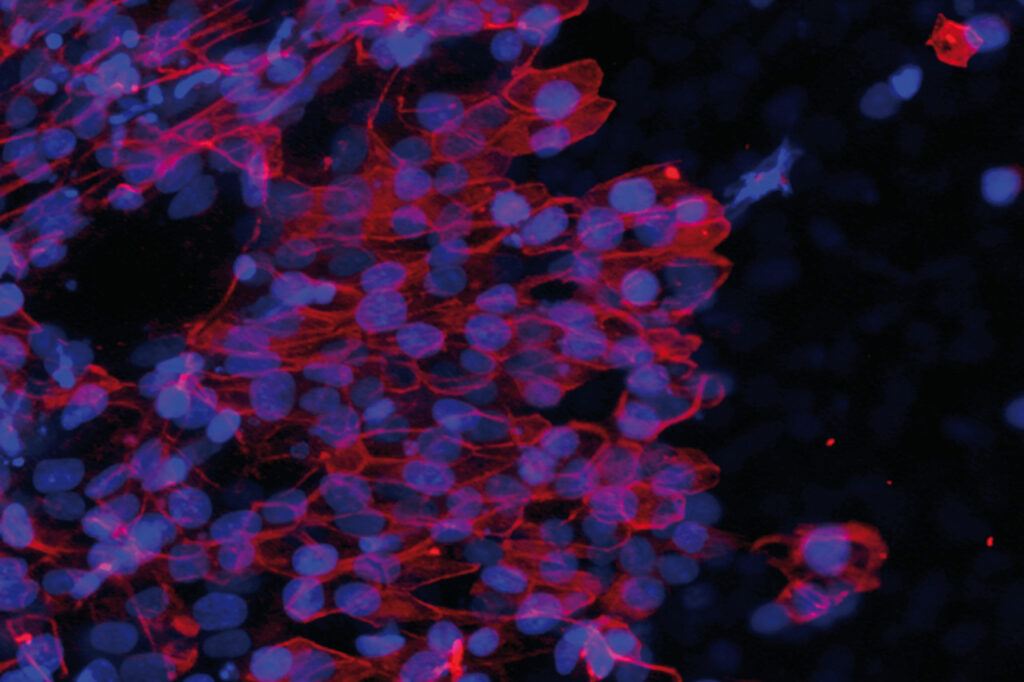[LUM#6] The repaired body
Replacing damaged or diseased cells with healthy ones... That's what cell therapy is all about. It represents the hope, at last, of a complete cure: the new frontier of 21st-century medicine.

There was surgery. Then came drugs. In recent decades, a new medical horizon has been emerging: cells. The principle of cell therapy is to implant healthy cells in a patient, replacing damaged tissue. And its applications? Potentially infinite. Cancers, neurodegenerative diseases, cell-destroying pathologies such as diabetes, heart attack, osteoarthritis... "Thanks to cells, we can imagine a cure for a disease. Thanks to cells, we can imagine completely curing pathologies that are incurable by other means ", explains John De Vos, head of the cell therapy unit at Montpellier University Hospital and researcher at the Institute of Regenerative Medicine and Biotherapy.
Some cellular therapies have already been tried and tested and are used on a daily basis. Their preferred tool? Adult stem cells, which are found within our organs and are specialized, capable of producing the different cell types of the organ to which they belong. It is these cells that ensure the repair and renewal of our tissues throughout life. Skin stem cells, harvested and cultured, can provide up to a thousand times more epidermal surface area... This means that burn victims can be treated with their own skin, with no risk of rejection.
Grafting a new immune system
For decades, one of the most advanced cellular therapies has been based on blood stem cells, the cells that produce blood. Known as hematopoietic stem cells (HSC), they play a fundamental role in the treatment of blood cancers. Injecting a sufficient quantity of these cells into a patient is like grafting a new immune system onto him or her... This has a dual effect: the graft recognizes and destroys the cancer. And it replaces the original immune system, damaged by treatment.
But where do you get these precious blood-producing cells? From the bone marrow of compatible donors: anonymous donations from international registries, or family members. Or from placental blood. For this, blood is taken from the umbilical cords of newborns whose parents have given their consent. Each frozen graft is added to a placental blood bank, then registered in internationally coordinated registers... Allowing patients from all over the world to obtain the compatible graft that can save their lives. " There are people in Turkey, Holland, the United States and Germany living with the blood of a child born in Montpellier. The placental blood bank at UTC Montpellier now has 2,500 units of placental blood," explains John De Vos.
HSC can also be injected into the patient himself, as an autograft. Prior to particularly intense chemotherapy, HSCs are collected from a patient suffering from lymph node cancer. After treatment, they are reinjected into the patient, enabling him or her to regenerate the immune system.
Spectacular healings
Another cell therapy with a proven track record is the treatment of diabetes using specialized cells from the pancreas. These are the cells that produce the insulin we need to regulate our blood sugar levels. " Some patients who have suffered from very severe and unstable diabetes for decades can stop taking insulin injections altogether, at least for a while ," explains John De Vos. This powerful treatment is only a fraction of the answer to this disease. In particular, it is impossible to generalize it: it would require far too many deceased donors...
Skin culture, treatment of blood cancers or severe diabetes... these cellular therapies have already been mastered. What about the therapies of the future? Immunotherapy is a fast-growing field in which patients suffering from certain blood cancers are treated by harvesting crucial immune cells: lymphocytes. These cells are then genetically modified to train them to recognize the cancer... before being reinjected into the patient. The result of clinical trials: spectacular cures for children suffering from acute leukemia resistant to all treatments. " In cohorts where 100% of patients appeared to be doomed, the majority were saved. It's very rare to have such a breakthrough in the treatment of a disease ", enthuses John De Vos.
Regenerate any tissue
Pluripotent stem cells(Demain guérir LUM no. 2) are also on the revolutionary horizon of cell therapy. Immature and unspecialized, they are capable of producing any type of cell in the body. They are found naturally in embryos of around one week of age, which measure a tenth of a millimetre... And in recent years, research has enabled us to learn how to obtain them by reprogramming mature adult cells. The next step is to get them to specialize, before injecting them. And potentially regenerate any tissue or organ in the body(Les cellules souches pluripotentes induites : un nouveau paradigme pour l'étude des tissus humains, in Biologie aujourd'hui, 2016).
This research still requires years of development. The biggest question for the moment remains that of injection. The injection technique has not yet been mastered, and the cells injected do not necessarily find their place in solid tissue," explains John De Vos. Each organ has its own injection problems: for example, how do we get neurons intended to treat Parkinson's to project their axons in the right place? Stem cell research, which is extremely promising, will make progress and will undoubtedly find solutions organ by organ ".
UM podcasts are now available on your favorite platforms (Spotify, Deezer, Apple podcasts, Amazon Music...).